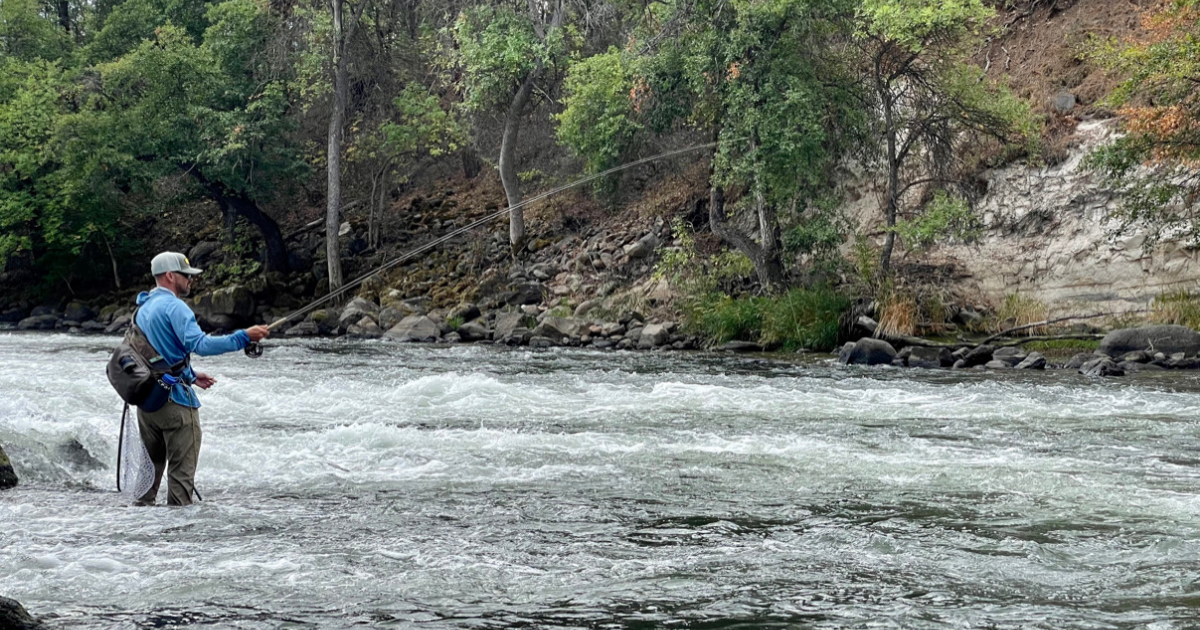Donor Spotlight: Mac Heebner

Written by Mac Heebner, CalTrout Member and Donor since 2019
I found CalTrout in 2019 through my company's — TruSource Consulting Group — involvement in the 1% for the Planet movement, and I started with an initial pledge. I’m happy to have been able to continue to support each year since then including a pledge for 2022. I was looking for a local organization focused on boots-on-the-ground efforts in environmental restoration and conservation. I was also looking for an organization that had the tools, staffing, and reach to make a real difference. I found both in CalTrout as well as a bunch of cool humans that I felt I could hang out with on the water and in the storytelling after.
I am a fly fisher though relatively new to the sport. I started in 2018. I grew up bobber fishing with my grandfather in central PA on his Sears-Roebuck aluminum boat. I’m also the son of a career National Park Ranger and the product of a family that spent as much time outdoors as possible focused on enjoying the natural world and trying to leave it better than we found it. Fly fishing allows me to become fully engrossed in and focused on a body of water, the surrounding environment, and the elusive trout. It is the active meditation, addiction, and escape that keeps me level. If I’m not on the water, I’m frequently reading books or watching videos about being on the water.
It's way too hard for me to pick a single favorite angling memory. In the moment, two that stand out for me are 1) my very first trout caught with a fly rod at Timbuctoo bend on the Lower Yuba - only ~12” but dang it was a pretty fish! And 2) my young son catching a small brookie on the Yampa in CO with a huge plastic lure I told him would never work and the huge ‘I-told-you-so’ smile on his face.
I keep discovering new rivers in California - in many cases with the help of CalTrout - and there are still so many I haven’t experienced yet. At this point, if I had to pick a favorite, I would pick Putah Creek just west of Winters, CA. It is an amazing little stretch of water with a great history. It was depleted and then revitalized and is now being taken care of by a number of small organizations focused on returning it to a blue-ribbon, wild trout habitat. On top of its history, it is a technical, diverse, and productive fishery that is only an hour from home. Though I must admit that the Pit River is a very close second.
What does being a CalTrout member mean to me? Simply, it means impact. CalTrout moves the needle, the team makes things happen, and their efforts make a difference. I’ve toured some of the projects, I’ve learned about the complexity and scale of the efforts, and I’ve met many members of the team. This is real work, right now, with near- and long-term impact and I’m proud to support it (and benefit from it).

Of CalTrout's work, the DAMS OUT initiative is probably the most exciting and inspiring for me. I remember being completely shocked when I learned about the number of dams in California and even more surprised about the number of those that are either no longer being maintained and/or have outlived their functional lifespan. I find it exciting because the work is tangible - you can see when a dam has been removed. I find it inspiring because the results are so far reaching literally downstream as well as figuratively downstream over the course of time.
In 50 years, I hope California’s rivers and fish will be vibrant, healthy, protected and accessible. I hope they will be prioritized by policy makers, enjoyed responsibly by the public, and cared for by CalTrout and like-minded organizations.
Thank you, Mac, for sharing your stories about fishing and the outdoors, and for being a dedicated CalTrout member! If you are interested in becoming a member of CalTrout, visit: www.caltrout.org/become-a-member.






